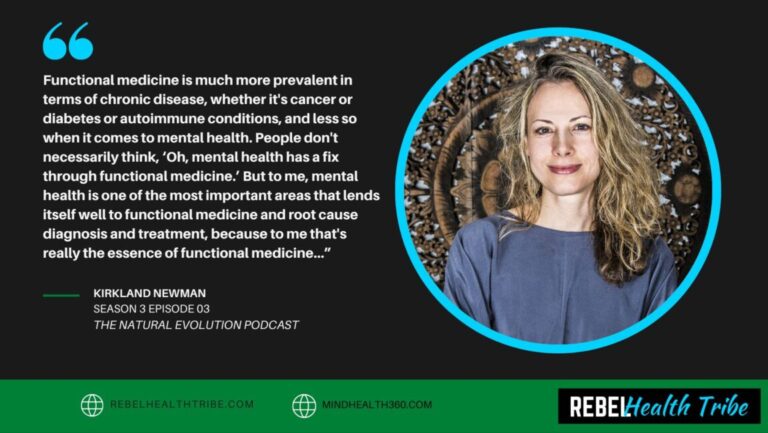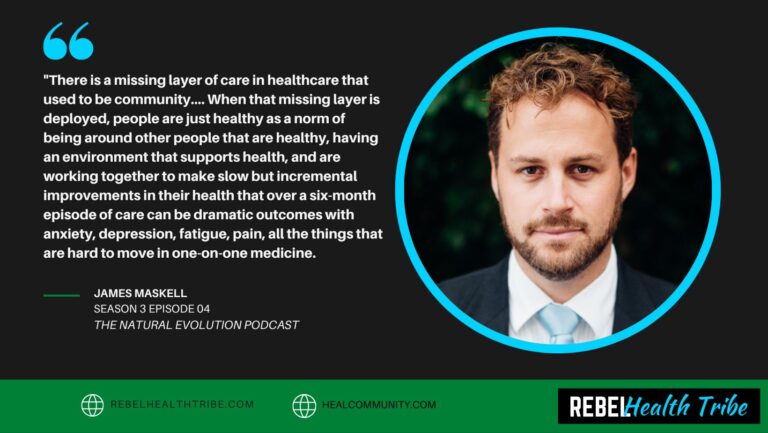

More Posts from
Toxicity & Detox Support
Sign Up & Receive the So You Think You Have Mold, Now What? PDF
Sign up with your name & email to receive the So You Think You Have Mold, Now What? PDF along with any future updates, content, and mold-related offers from RHT & Cathy Cooke!
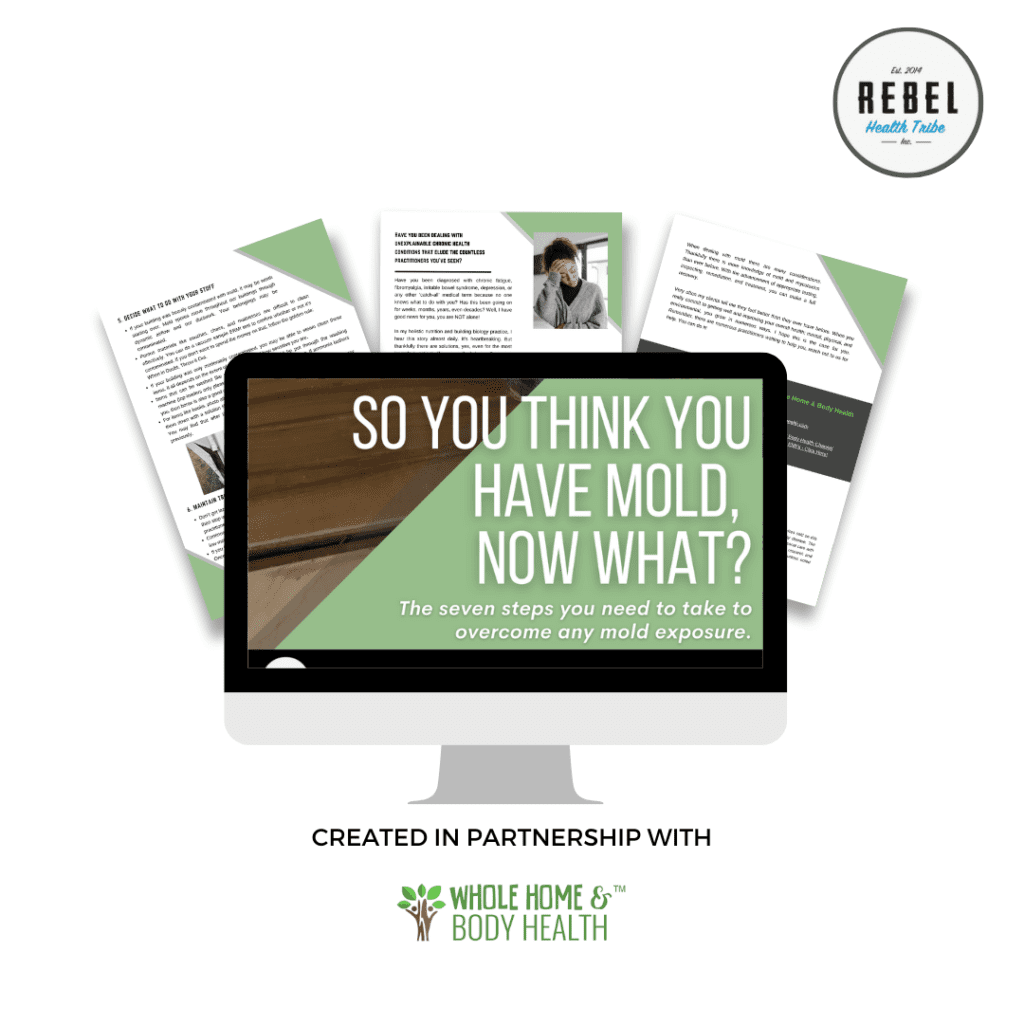
Signs & Symptoms of Mold Illness
It seems like everyone I talk to these days is concerned about mold. They’re concerned about having it in their house, in their bodies, in their workplace, and they think it’s making them sick. I mean, I am a mold inspector; so, I guess I should have seen that coming.
The truth is, a lot of people are suffering from mold illness. We don’t have statistics on how many, but its definitely more than ever before – but then most chronic illnesses are on the rise for various reasons so it shouldn’t be surprising that mold illness is part of that trend.
If you were to look up ‘Symptoms of Mold Illness’ online, you’ll get several medical sites noting the standard ‘sneezing, rash, watery, itchy, or irritated eyes, and other ‘allergenic-like’ symptoms. However, mainstream outlets rarely acknowledge the more serious health problems mold exposure can produce. It’s very common for sufferers of mold illness to get misdiagnosed for months, years, or even decades. I have worked with far too many people who have seen dozens of practitioners only to be told ‘Your lab work looks great! Here’s an antidepressant.’
It’s far too common for mold sufferers to be misdiagnosed with mental health issues…
Cathy Cook, BBEC, EMRS
It’s far too common for mold sufferers to be misdiagnosed with mental health issues or any of the following ‘catch-all’ conditions:
- Anxiety
- Depression
- Irritable Bowel Disease (IBS / IBD)
- Chronic Fatigue Syndrome
- Fibromyalgia
- Bipolar Disease
- Hypochondria
- Lyme Disease
- Lupus
- Multiple sclerosis (MS)
- …and other rather creative diagnoses
It’s frustrating to say the least. The lack of awareness in the medical community can keep people in a severely ill state for years. When a mold infection goes untreated, not only do you miss opportunities for healing, but the infection can begin to affect multiple body symptoms, creating even more misery and suffering. Thankfully though, awareness about the severity of mold exposure has been growing exponentially over the last few years. We have more answers and treatment options than ever before.
Sign Up & Receive the So You Think You Have Mold, Now What? PDF
Sign up with your name & email to receive the So You Think You Have Mold, Now What? PDF along with any future updates, content, and mold-related offers from RHT and Cathy Cooke!
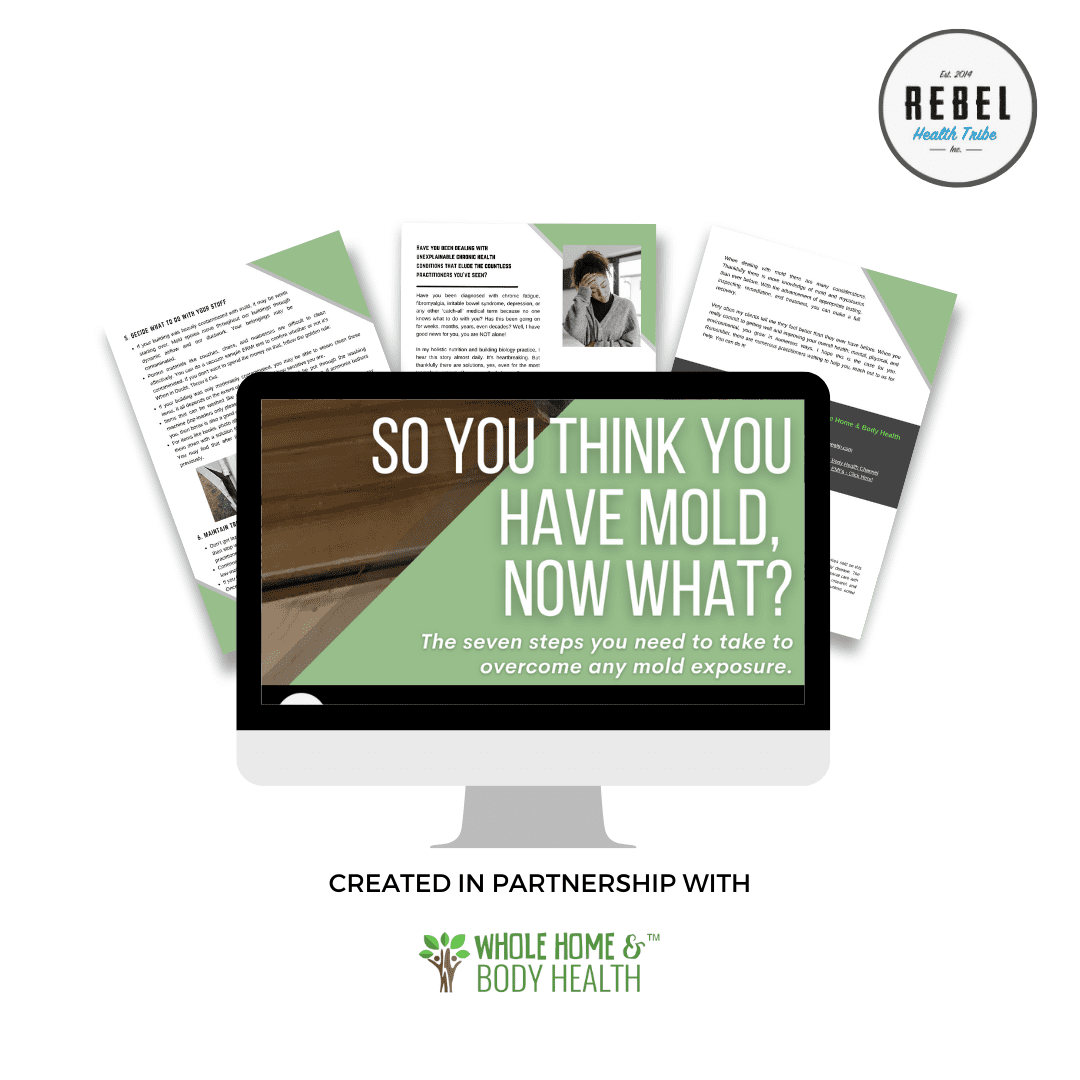
So how do you know if your health problems are related to mold?
The symptoms of a mold exposure can mimic many other conditions and it’s easy to see how people can get misdiagnosed for so long. It’s also important to note that mold spores per se aren’t what causes people to get sick.
Rather, it’s the mycotoxins they emit: Myco = fungus and toxin = a poisonous substance.
Mycotoxins are the gaseous chemicals that mold spores give off when they are dying or feel threatened.
The multiple symptoms people can experience when exposed to mycotoxins include:
- Poor Memory
- Brain Fog
- Inability to Focus
- Headaches and Migraines
- Severe Fatigue
- GI Issues, including SIBO and SIFO
- Food Intolerances
- Insomnia/Hypersomnia
- Histamine Intolerance or Mast Cell Dysregulation
- …and many more.
- Oxalate Sensitivity
- Yeast Infections/Thrush
- Joint Pain
- Eczema, Rash, or Psoriasis
- Muscle Aches and Pains
- Dizziness and Vertigo
- Tremors
- Heart Palpitations
- Ringing in the Ears
- Hormone Dysregulation
- Persistent Nerve Pain
- Anxiety
- Depression
- Asthma and Respiratory Issues
- Chronic Sinus Infections
- ADD/ADHD
- Intolerance to Light and Sound
- Reduced Libido
There are numerous ways that mycotoxins can affect the body, as illustrated by the vast array of symptoms they can cause. Because of their very tiny size, they can easily pass through cell membranes. They can be breathed in through the lungs, consumed via food and drink; affecting the gut, and even absorbed directly through the skin. Once absorbed through any of these pathways, they can make their way into systemic circulation. Once they’re in the body, they can affect any organ or body system; most often they affect multiple systems at once. This is why the symptoms can be so complex and numerous.
The most common symptoms I see among my clients include brain fog, fatigue, irritability, food intolerances, EMF sensitivity, hormonal disturbances, and disturbed sleep. But most of them have many other symptoms as well.
In addition to these symptoms, research has shown that chronic untreated exposure can result in more serious systemic health conditions like autoimmunity, Cancer, Alzheimer’s Disease, Parkinson’s, and even death.
The challenging thing about mold illness is that these symptoms could be related to numerous other health conditions. There are a few clues however that are somewhat unique to mold.
When I’m working with a client that has a number of the symptoms listed above, along with any of these:
- Frequent urination
- Excessive thirst
- Frequent static shocks
- Feelings of electrical shocks along the nerves
- EHS (electrohypersensitivity)
…my suspicions of a mold illness are greatly increased.
These are signs that are often ignored, but quite relevant to a mold exposure. One of the reasons for this is because mycotoxins can disrupt your bodies electrolyte balance causing an increase in static shocks. It can also affect your antidiuretic hormone (ADH) causing you to pee more often. There are other more complex reasons why mold exposure leads to EHS, but nearly all of my clients with mold issues do not tolerate much EMF exposure.
Of course, even the best practitioner can’t confirm that mold is a problem for you without proper testing to verify. If said practitioner takes a good healthy history and recognizes the symptoms, their next step would be to order confirmatory lab testing.
There are a few different ways to test for mold in your body, including:
- Mycotoxin Urine Test by the following labs:
- RealTime Labs
- Great Plains Labs
- Vibrant Wellness Labs
- Dr. Shoemaker CIRS Labs:
- MSH
- ADH/Osmolality
- C4a
- C3a
- ADH
- VIP
- TGF Beta 1
- ACTH
- VEGF
- MMP-9
- Leptin
- HLA DR Genetic Testing
These lab tests will cost you anywhere from $200 to $700 depending on your doctors’ fees to order them. Before you even see a practitioner however, you can do the free online Visual Acuity Screening. As the name implies, this screening tests your visual acuity. A mycotoxin exposure can affect your nervous system and vision, so this test can provide some preliminary information.
Another self-test you can do, and one that I highly recommend, is to go off-grid for a week or two and see how you feel. By off-grid, I literally mean leaving civilization and going camping for a few weeks, if possible. One of the most informative comments my clients make is that when they leave their home, many of their symptoms subside. That is a very big clue! Of course, there are other things inside your home that could be impacting your health (like EMF, chemicals, dust, radon, carbon monoxide etc.) but if you leave your home and feel better, that must not be ignored. If you have an opportunity to get outside in nature for a while this could provide you with some valuable information. Just be sure not to bring mold-contaminated items with you like your tent and sleeping bag.
In addition to testing your body, getting information about your home, office, car, or other environment where you spend a lot of time will help to create a more complete picture of what you’re dealing with. If for example, you find ‘stachybotrys’ mycotoxins in your urine, and you also find them in your home, then you can conclude this is probably where your exposure is coming from. Your health-care practitioner will probably recommend that you hire a mold inspector to test your home. I strongly support this recommendation, just be sure to hire a qualified inspector with a lot of experience. A good home inspection should take 3-7 hours depending on the size of your home. If the inspector’s normal protocol is to take air samples in multiple rooms of your home, do not hire them. Random air samples in the middle of rooms are not sufficient. You want someone to look at every inch of your home, including the attic, crawl space, roof, and outside perimeter. Check out this post to learn more about testing, including DIY testing. Remember you want to test your body and your home.
To conclude, if you’re experiencing a plethora of strange, seemingly unrelated health symptoms that no one can figure out and you haven’t looked into mold yet, you definitely want to explore this. There are two great places you can find mold literate practitioners: here, and here.
Remember, there has been tremendous progress in understanding and treating mold illness in the past few years. I have seen countless people make a full recovery from mold, and some say they feel better after their recovery than they ever did before. It does take time and commitment to heal, but isn’t that true with all things in life that are worth pursuing? There is a lot of information and support out there, from online courses to in-person groups. Thousands of people have been through this, so know that you are not alone! And of course, if you have any questions and need further support, don’t hesitate to reach out. I am always happy to connect with you.
Contact Cathy at Whole Home & Body Health
Call: 970-485-5092
Email: cathy@wholehomeandbodyhealth.com
YouTube Channel: Whole Home and Body Health
Download: Top 10 Guide for Reducing EMF’s – Click Here!
Feeling overwhelmed with all this information?
Join her Environmental Illness & Sensitivity Group to get support.
Sign Up & Receive the So You Think You Have Mold, Now What? PDF
Sign up with your name & email to receive the So You Think You Have Mold, Now What? PDF along with any future updates, content, and mold-related offers from RHT and Cathy Cooke!

Sign Up & Receive the So You Think You Have Mold, Now What? PDF
Sign up with your name & email to receive the So You Think You Have Mold, Now What? PDF along with any future updates, content, and mold-related offers from RHT & Cathy Cooke!

Toxicity & Detox Support Products
Get Social
Recent Podcasts
Recent Courses
Build Your Resilient Gut
An Exclusive Course with 10 Years of Microbiome
Kiran’s Professional Training Vault
If you’ve ever wanted all of Kiran’s best
Toxicity & Detoxification Masterclass 2024
The toxicity and Detoxification Masterclass covers a wide
Brain & Nervous System Masterclass 2024
19 Leading Experts Share Cutting-Edge Science, Effective Practices,
Autoimmune Masterclass 2024
Autoimmune Masterclass brings together 17 of the world’s
Get the RHT Newsletter

Genetics and Hormone Production, Transport, Utilization, and Metabolism
Our genetics play a larger role in our hormones than most people think. Obviously, diet, lifestyle, and environment are the
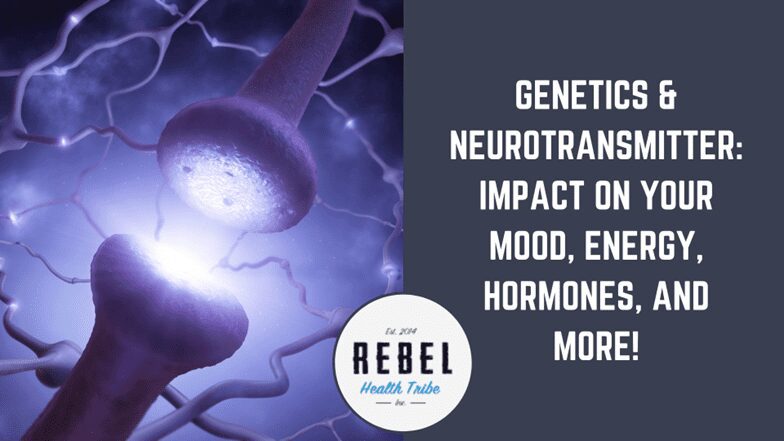
Genetics & Neurotransmitters: Impact on Your Mood, Energy, Hormones, and More!
Have you wondered why an antidepressant didn’t work for you? Have you ever wondered where your anxiety is coming from

Genetics and Detoxification: Your genes are key to knowing what detox protocol will best suit your body.
https://vimeo.com/821487331 If you’ve ever bought a detox kit off a shelf or felt considerably worse while doing a detox,

An Introduction to Functional Genomics: Know Your Genetics and Make Informed Personal Health Decisions
https://vimeo.com/821487068 The desire to know how your genes are affecting your health is rapidly growing. Many people are getting genetic

